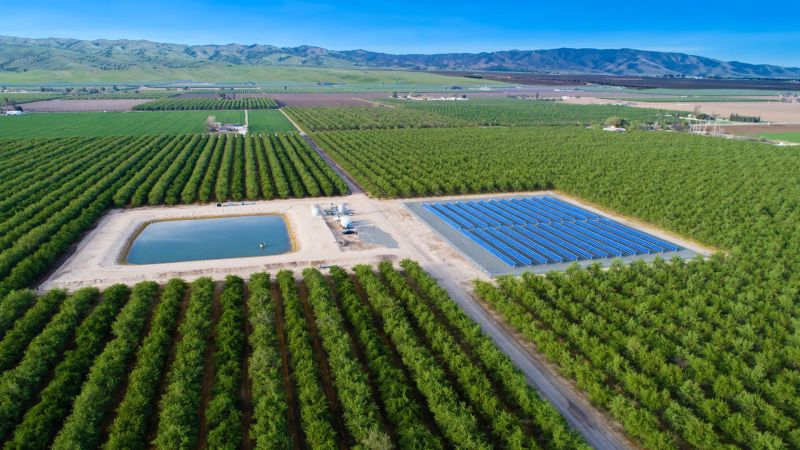How Farms Can Tend to the Energy-water Nexus, Reduce Costs and Help Their Communities
Published on by Water Network Research, Official research team of The Water Network in Government
In her latest article, Kate Zerrenner, Senior Manager of Energy-Water Initiatives, Environmental Defense Fund, and Dylan Dupre, President and CEO, CalCom Energy talks about the symbiotic relationship between water and energy use and its effect on the agricultural industry in the U.S.

Image by CalCom Energy
Across the country, farmers face unrelenting pressure to conserve both water and energy. From California to Texas, recent droughts and declining groundwater levels require more pumping to provide irrigation water for crops. Pumping water takes energy, as do many other precision agriculture tasks involved in running a successful farm today. This symbiotic relationship between water and energy use – often called the energy-water nexus – is taking its toll on America’s agricultural industry.
For most operations, the result is higher costs, tighter margins and, unfortunately for everyone, a less sustainable food supply.
Demand for food is expected to surge by more than 50 percent as the global population grows to 9 billion people by 2050. In light of this, how can farms adequately manage water and energy to ensure their survival and the security of our food supply?
The answer is not simple, but it is clear: integrated resource management. Farms must consider their use of water and energy together to ensure the optimal use of both. Doing so isn’t just good for the sustainability of our food systems, it’s good for the bottom line.
To learn more about the benefits of integrated water and energy management, read the entire article on the Environmental Defense Fund website.
Media
Taxonomy
- Agriculture
- Drip Irrigation
- Sustainable Agriculture
- Agribusiness
- Food Security
- Irrigation
- Irrigation and Drainage
- Future Irrigation Systems
- Agricultural Engineering
- Renewable Energy Treatment
- Resource Management
- Water Resource Management
- Water Resource Mapping
- Integrated Urban Water Management
- System Integration
- Water Resources
- Sustainable Water Resource Management
- Natural Resource Management
- Integrated Watershed Management
- Water-Energy Nexus
- Urban Resource Management
- Integrated Infrastructure
- Water Resource Management
- Water Resources Department
- Renewable Energy Projects
- Energy-Water Nexus
- Renewable Energy
- Renewable Energy
- Renewable Energy Power
- Renewable Water Resources
- Irrigation & Water Management
- Renewable Energy
- Integrated Water Resources Management (IWRM)